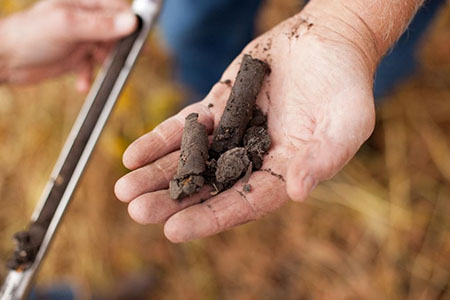May 16, 2018

Planting is in full force across the Midwest. Now the attention moves towards the question of nitrogen. Is there enough nitrogen?
However, the question should be how efficient is the nitrogen?
One researcher says the quest for high yields does not mean the plants require more nitrogen.
“Although corn yields have risen steadily in the past 50 years, these higher yields don’t necessarily require more nitrogen,” says Dr. Jim Friedericks, Outreach and Education Advisor for AgSource Laboratories.
But how do you know how much nitrogen fertilizer is enough?
The traditional way to calculate nitrogen fertilizer requirements is to multiply your predicted yield times 1.2 pounds of nitrogen for each bushel of corn. Then deduct from that amount any nitrogen credits from prior soybean of alfalfa crops or residual nitrogen in the soil. This straight forward approach works well to estimate the nitrogen requirement.
Nitrogen calculator
“Profitability starts with the fertilizer application,” says Friedericks. “And the nitrogen rate calculator will help you evaluate your recommendation.”
Friedericks suggests using an economic nitrogen rate calculator as a way to review those recommendations. There are a few tools to do this, including the corn nitrogen rate calculator that is available online from Iowa State University at http://cnrc.agron.iastate.edu/.
This calculator determines the economic return of nitrogen fertilizer using different nitrogen and corn prices in order to find the most profitable application rates. The calculations are based on recent nitrogen rate research data in the Upper Midwest Corn Belt States. The calculations are unique to each state.
Spring soil test
Once the crop is growing, a late spring soil test measures the amount of nitrogen available and helps predict the amount needed for the rest of the growing season by checking the nitrate concentrations present in the soil.
Samples must be taken when corn is 6-inches to 12-inches tall. Soil cores should be taken at a depth of one foot with one sample containing 15 to 20 cores, from similar field areas that are no more than 10-acres to 20-acres in size.
Nitrogen Use Efficiency (NUE) is a term used to indicate the ratio between the amount of nitrogen removed from the field by the crop and the amount of nitrogen applied. Along with the improvements in corn yields, the efficiency of nitrogen use by the crop, has improved over the past few decades too, which means you don’t need to apply excessive amounts of fertilizer to get the best harvest. It’s all about the 4Rs – right place, right time, right source and right rate.
“Use an assessment test to evaluate your nitrogen program so you are not overapplying and wasting money,” says Fredericks.
This means evaluating your nitrogen program and determining how much has been applied to the field already. If the nitrogen was applied in the fall, test in the spring or at the 6’’ growth stage. Fredericks says plant to split the nitrogen applications and evaluate overall amount that you are going to apply.
Late spring nitrogen testing
To make late spring nitrogen testing a good investment, consider these conditions including splitting the applications which means more nitrogen is needed to finish crop growth; last fall’s nitrogen application as less than the expected crop requirement; the cool spring delayed nitrogen transformation in the soil impacting the availability of nitrogen and manure application since harvest has been leached due to the cool and wet soil conditions.
To make the most of a nitrogen application, it has to be the right amount, applied at the right time and at the right rate,” Friedericks says. “Splitting the application between pre-plant and a side-dress application may be one of the ways to get the right rate at the right time. A late spring nitrate test can help you ensure this season’s crops have adequate nitrogen levels for top production and maximum yields.”
Environmental factors
There are the obvious environmental reasons for reducing nitrogen applications, including the protection of ground water and waterways, but there’s also the economics of it: nitrogen is expensive and overuse cuts into farm profits.
“As markets continue to be less then optimal, every dollar counts, which is why nitrogen use efficiency is important to your crop and to the bottom line,” says Friedericks.
(AgSource Laboratories is a leader in agricultural and environmental laboratory analysis and information management services, with facilities in Iowa, Nebraska, Oregon and Wisconsin. )
You May Also Like




